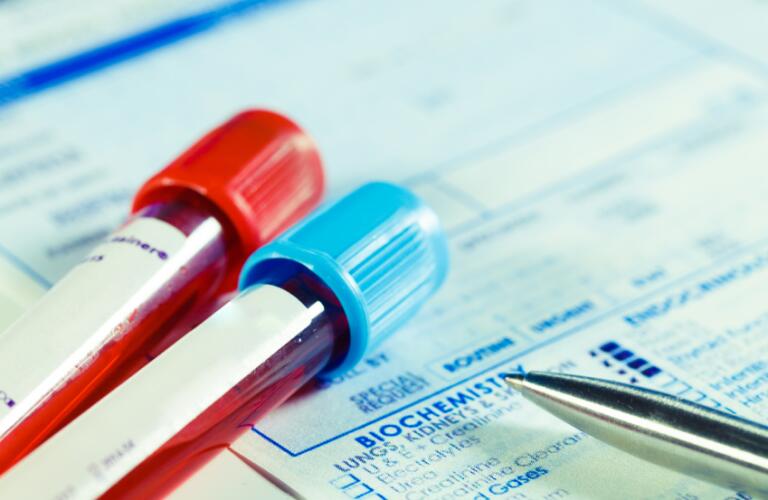Testing for low testosterone can be tricky and may require bloodwork as well as some additional tests.

You’ve probably seen commercials on TV addressing the symptoms of low testosterone, often called “Low-T”. Testosterone is a hormone responsible for male development, though it’s also present in lesser amounts in women. Produced mainly in the testicles, testosterone plays a role in hair and muscle growth, bone density, libido, sperm production, and red blood cell formation.
A diagnosis of low testosterone generally includes two components: 1) observed and reported signs and symptoms of low testosterone and 2) blood work confirming that low levels are present.
Signs and symptoms of low testosterone
In some cases, low testosterone, also referred to a hypogonadism, may be seen early in life. Underdeveloped or ambiguous genitalia may be noted in male infants. Young boys with low testosterone may experience a lack of the physical changes that normally accompany puberty, such as voice deepening and hair growth.
However, most cases of low testosterone will occur during adulthood since testosterone levels naturally decrease with age. The following symptoms are commonly seen:
- decreased sex drive
- erectile dysfunction
- weight gain
- fatigue
- depression
- osteoporosis
- infertility
- decreased physical ability
Blood tests for low testosterone
Measuring testosterone levels can be a bit challenging. Testosterone is not only affected by age, but it can also change within an individual from week or week or from morning until night. It is generally recommended to have blood drawn around 8 a.m. when levels are the highest. Medications, illness, glucose intake, and activity can also affect testosterone levels. For these reasons, you may need to have your levels checked more than once.
The majority of testosterone in the body is bound to a protein, and the small percentage that is not bound is considered ‘free” or biologically active. This distinction plays a role in two of the blood tests that are used to measure testosterone levels:
- Total testosterone: This is the most commonly used test. Using a small sample of blood that is drawn from a vein, the total amount of testosterone (both bound and free) will be measured. Normal males will have 300 to 1,000 ng/dL of testosterone, though this can vary based on the laboratory. Levels under 300 ng/dL are generally classified as low.
- Free or bioavailable testosterone: Some doctors may opt for this test as well, under the assumption that free or bioavailable testosterone is what easily enters into the cells and is therefore more significant.
At-home saliva tests for low testosterone
With a growing number of commercial kits that use saliva to test for low testosterone, you may be tempted to try one of these in the convenience of your own home. While some studies have shown there’s a close correlation of testosterone in the saliva to free testosterone in the blood, it has also been shown that measurements can be greatly affected by the way the saliva is collected and stored. Due to this unreliability, your doctor would be unlikely to use any information obtained from an at-home testing kit to make a clinical decision.
Additional testing
Even more important than discovering you have low testosterone is finding out what is causing it. Your doctor will want to determine if your low testosterone is due an issue with the testicles or with the hypothalamus and pituitary gland-both part of the central nervous system. Some additional tests may include:
- Luteinizing hormone (LH) and follicle-stimulating hormone (FSH): Levels of these hormones can indicate if there is a problem with the pituitary gland.
- Sex Hormone Binding Globulin: This is the main protein that binds with testosterone, and levels can be used to provide additional information about bioavailable testosterone.
- Semen analysis: This may be used to check for fertility issues.
- Genetic testing: Syndromes such as Klinefelter, Kallman, and Prader-Willi can cause low testosterone.
If you are concerned that you may have low testosterone, schedule an appointment with your doctor. A thorough medical history, physical exam and any testing that is warranted will provide your doctor with the information needed to make the proper diagnosis and treatment decisions.




